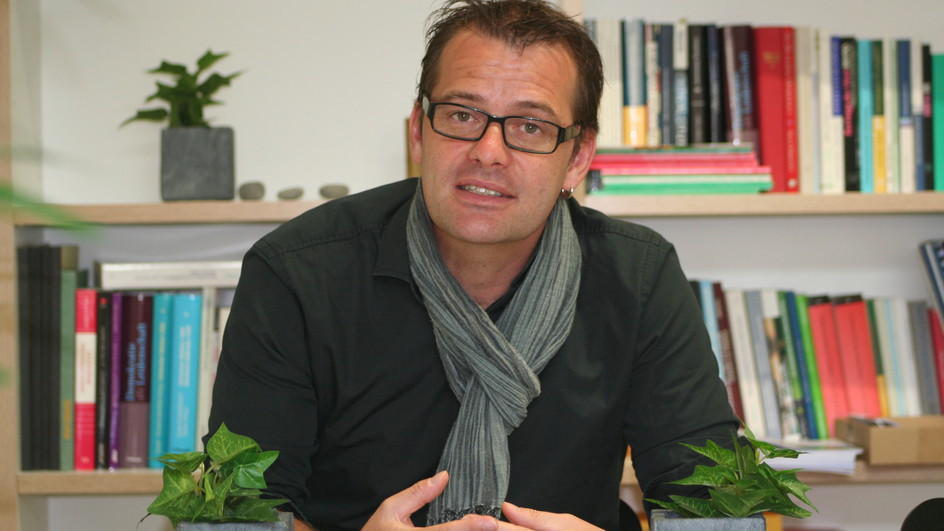Swiss elections in the media: lacklustre campaign yet ‘historic’ results

What foothold did the 2023 Swiss elections find in the national and international press? Political analyst Marc Bühlmann provides some insights.
Long before final results were confirmed, the websites of newspapers from the Tamedia group had already announced a “historic” election result. Projections showed the right-wing Swiss People’s Party would emerge as clear winners, while, just as clearly, the left-wing Greens would lose.
While Swiss media have largely focused on the bad result for the Green Party, international media have been more interested in the victory of the People’s Party.
This result will once again make the People’s Party the strongest political group in Switzerland, the “populist right” has won using issues like “the fight against mass immigration”, the conservative French newspaper Le FigaroExternal link wrote. Deutsche WelleExternal link led with the headline that “the populist right is growing” in Switzerland. For BloombergExternal link, the “anti-immigration” group has cemented its position as the strongest Swiss party.
But the current portrayal of the election as so historic is in stark contrast to the fact that the run-up to the vote was so muted: the end period of campaigning this year was hardly noticeable in the media.
Swiss elections are not renowned for ushering in huge changes – you would have to look hard to find drama. And since the start of the Israeli-Palestinian war, public interest has decisively shifted towards the global crises. Reporting on the 2023 elections may also have been stunted due to the lack of any one overarching campaign theme – which wasn’t the case four years ago with environmental topics taking centre stage with the “Green Wave”.
Neither migration nor climate
The “Année Politique Suisse” platform analyses print media coverage of Swiss elections and votes according to scientific criteria. The platform finds answer to questions such as, how often did each party appear in the press? Which issue dominated? This year, 4,106 articles analysed during eight weeks threw up a range of issues: while “health insurance premiums and health” might have been the most common, other themes like banks, traffic, energy, migration, and climate were all present, write the researchers Anja Heidelberger and Marc Bühlmann.
This marks a change from the 2019 elections, which have gone down in memory as “climate” and “women’s” votes; in 2015, a period of high asylum applications meant reports about migration dominated. This year however, media coverage of the campaign was not based around “a single predominant issue”, the analysis says.

Mobilisation decisive
Because voter participation in Switzerland is low by international comparison, mobilising supporters is key to deciding the outcome. Marc Bühlmann, one of the co-authors of the study and the director of Année Politique Suisse, tells SWI swissinfo.ch that “in Switzerland, with its low participation rate, the central question of a campaign is which party manages to mobilise its pre-existing base. Four years ago, when the Greens were seen by the climate movement as a solution, the party’s base was more strongly mobilised.”
This time the party was less successful in turning the – still present – climate issue to its benefit. When media reports on climate are connected with activist who glue themselves to streets to block traffic – this doesn’t help the Green Party.
The Année Politique Suisse researchers also analyse how often parties appear in the media. On this score, the right-wing People’s Party – the strongest in the country – is most often mentioned, followed by the left-wing Social Democrats, the centre-right Radical-Liberals, and the centrist Centre Party.
The frequency of media coverage corresponds strikingly similarly to the share of votes won by the parties in the 2019 elections. However, the four main parties – with a seat in government – parties are over-represented in proportion to smaller parties; the most under-represented are the small opposition groups the Protestant Party, the Federal Democratic Union, the Geneva Citizens’ Movement, and the Lega dei Ticinesi. “Their [combined] voter share of 10.1% corresponds to a media coverage share of 3.4%,” the analysis states.
Bühlmann says it’s remarkable that the media mentions correspond so well to the 2019 election results. “It’s still surprising how good the print media manages to portray the prevailing situation with regard to electoral strength,” he says.
Political parties also campaign on social media, but Bühlmann says it is more negligible. “A large amount of voters are middle-aged people – they do not use social media as a source of information,” he says. Parties might use social media as channels to mobilise their voter base, but “at the moment it’s probably quite hard to use them to sell yourself and win over new voters”.
The “Politransparency” platform shows that of all the Swiss parties, the Social Democrats invested most in Facebook and Instagram advertising: CHF429,100 ($480,500). The Radical-Liberals, the Liberal Greens, and the Greens were next, while the People’s Party only invested CHF112,000 in social media advertising.
That said, a video by the People’s Party which went viral on Instagram was viewed by well over 300,000 people – more than any other video published by a party account on that social media platform.

More
Our global journalists on the stakes of Swiss elections
According to Bühlmann, however, newspapers and traditional media remain decisive. “Being in the media helps, it brings a mobilising effect,” Bühlmann says. It’s “too simple” to say that “a party wins because it has a lot of coverage”, but coverage – whether positive or negative is not decisive – is important. Which shows the responsibility of journalists in deciding what to report on, and what not.
Edited by Mark Livingston; translated from German by Domhnall O’Sullivan/amva

In compliance with the JTI standards
More: SWI swissinfo.ch certified by the Journalism Trust Initiative







You can find an overview of ongoing debates with our journalists here . Please join us!
If you want to start a conversation about a topic raised in this article or want to report factual errors, email us at english@swissinfo.ch.